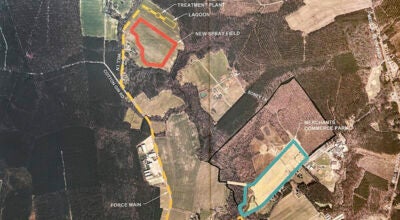Mercury found in Lake Gaston fish
Published 1:10 pm Thursday, November 19, 2009
LAKE GASTON – Don’t eat the fish…at least for the time being.
On Wednesday, the North Carolina State Health Director issued a fish consumption advisory for walleye and largemouth bass in Lake Gaston due to elevated levels of mercury found in these two species.
North Carolina health officials added that the advisory may extend to other species of fish found in the lake. They also warned that the advisory could affect bodies of water downstream from Lake Gaston, including the Roanoke Rapids Lake and the Roanoke River.
Fish sampling was also recommended for Kerr Lake, upstream from Lake Gaston.
The North Carolina counties of Northampton, Halifax and Warren border Lake Gaston. Since North Carolina and Virginia share boundaries for Lake Gaston, the two states have similar health concerns about the consumption of fish from the lake. As a result, the North Carolina advisory and recommendations for Lake Gaston were developed in consultation with the Virginia state public health toxicologist and Virginia state environmental officials.
The mercury contamination in the fish does not present a known health risk for persons engaging in other recreational activities such as touching the water, wading, swimming, boating, fishing, or handling the fish.
The advisory recommends that pregnant women, nursing women, women who may become pregnant, and children under age 15 should not eat any walleye or largemouth bass from Lake Gaston. Other people should not eat more than two meals a month of walleye or largemouth bass from Lake Gaston.
The advisory was issued because there is an increased risk of adverse effects to the developing brain of the unborn babies of pregnant women who eat fish contaminated with mercury. Young children may also be at risk of adverse neurological effects from eating fish contaminated with mercury.
Mercury is a metal that occurs naturally in the environment and is also released into the environment during some manufacturing processes and when fossil fuels (coal, oil and natural gas) are burned.
Most mercury pollution is released into the air and then falls directly into water bodies or onto land, where it can be washed into waterways. When mercury gets into water, bacteria can change it into a form called methylmercury, which is absorbed by tiny aquatic organisms. When fresh water and ocean fish eat those organisms, the mercury begins to build up in their bodies. When larger fish eat smaller fish, mercury can build up to high levels in the tissues of the larger fish. Mercury cannot be removed by cooking or cleaning the fish.
The North Carolina Division of Public Health (DPH) analyzed the environmental data and fish sampling data from Lake Gaston, and recommends additional fish sampling in the lake and other adjoining bodies of water as soon as possible for other fish species. Once the data is analyzed, DPH will decide whether additional fish consumption advisories are necessary.
Elevated levels of mercury have recently been found in walleye in this lake. Previous studies have found elevated levels of mercury in largemouth bass in all waters of North Carolina, including Lake Gaston.


